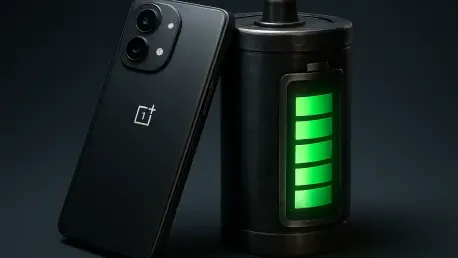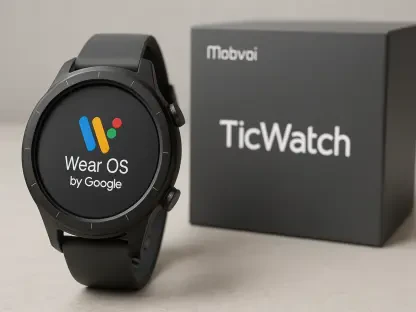Smartphone users today face a persistent challenge: balancing the need for cutting-edge performance with the demand for all-day battery life, especially as devices become integral to work, entertainment, and connectivity. The frustration of a dying battery or sluggish performance grows with each passing day. Enter the latest offerings from OnePlus, unveiled in China with a global rollout anticipated in November. This roundup gathers insights, opinions, and analyses from various industry voices and tech communities to explore the OnePlus 15 and Ace 6, focusing on their standout features like massive batteries and high-end specs. The purpose here is to provide a comprehensive look at how these devices are being received and what they mean for consumers navigating the premium smartphone market.
Industry Buzz on a New Era of Powerhouse Devices
Tech forums and industry watchers have been abuzz with the launch of these two models, often highlighting the bold step OnePlus has taken with battery capacities reaching up to 7,800mAh on the Ace 6. Many commentators emphasize that this addresses a critical pain point for users who rely on their phones for extended periods without access to charging. A segment of online tech communities praises the move as a direct response to consumer feedback about endurance in flagship devices.
However, opinions differ on the broader implications of such advancements. Some industry analysts argue that while battery size is a major draw, it might overshadow other essential aspects like software optimization or design ergonomics. Discussions on platforms frequented by tech enthusiasts suggest a split, with certain users questioning whether these devices can maintain a competitive edge in markets dominated by established giants pushing AI and camera innovations.
A recurring theme across reviews is anticipation for the global launch. Several tech blogs note that while the China debut has set high expectations, regional pricing and availability will heavily influence reception. This diversity in early feedback underscores the need to dig deeper into specific features and how they resonate with varied user priorities.
Diving into Key Features: Opinions and Analyses
Battery Life: A Game-Changer or a Gimmick?
Across multiple tech review channels, the massive batteries—7,300mAh for the OnePlus 15 and 7,800mAh for the Ace 6—stand out as a defining feature. Many early impressions commend the potential for multi-day usage, especially for power users juggling gaming, streaming, and productivity tasks. Community discussions often cite this as setting a new benchmark, with some predicting it could push competitors to follow suit.
Yet, not all feedback is overwhelmingly positive. A portion of industry analysts raises concerns about the trade-offs, such as increased device weight and potential heat buildup during intensive use or fast charging at 120W. Comments from hardware-focused reviewers suggest that while OnePlus likely incorporates cooling solutions, real-world testing will be crucial to validate claims of sustained performance without thermal throttling.
Another angle from user forums focuses on practicality. While 50W wireless charging on the OnePlus 15 garners appreciation for convenience, skeptics question whether casual users need such colossal capacities, arguing that optimized power management software could achieve similar results. This split in opinion highlights a broader debate on whether bigger always means better in smartphone design.
Performance: Power for Gamers and Multitaskers
The integration of Snapdragon’s latest chips—8 Elite Gen 5 in the OnePlus 15 and the Extreme Edition in the Ace 6—has drawn significant attention from gaming communities and tech benchmarkers. Many initial reactions celebrate the raw power, with forum posts describing seamless experiences in high-demand scenarios like running AAA titles at maximum settings or handling multiple apps without lag. This aligns with the brand’s reputation for speed.
Contrasting views emerge from some performance analysts who caution against overheating risks during prolonged sessions. Discussions on tech-focused social media platforms point out that while the chipsets offer a competitive edge over rivals, sustained high-intensity usage might reveal limitations if cooling systems fall short. This concern is often paired with calls for detailed stress test results post-launch.
A third perspective from productivity-focused reviewers emphasizes multitasking capabilities. Insights gathered from early hands-on previews suggest that professionals relying on resource-heavy applications could find these devices transformative. However, the consensus remains that real-world usage across diverse demographics will ultimately determine if the performance hype holds up against top-tier competitors.
Display Tech: Smooth Visuals with Mixed Reception
The 165Hz refresh rate displays on both models—6.78-inch FHD+ BOE X3 on the OnePlus 15 and 6.83-inch AMOLED on the Ace 6—have sparked lively discussions among display enthusiasts. Many gamers and streaming fans, active in online communities, laud the ultra-smooth visuals as a game-changer for immersive experiences, aligning with industry trends toward high-refresh screens.
On the flip side, a segment of tech critics argues that the benefits of such high refresh rates might be lost on casual users. Feedback from review aggregators often mentions battery drain as a potential downside, questioning whether the average consumer scrolling through social media will notice a tangible difference compared to standard 120Hz displays. This critique fuels a debate on feature prioritization.
Regional preferences also shape opinions, with some market analysts noting that larger screens like the Ace 6’s appeal more in areas where media consumption dominates usage patterns. Conversely, the compact design of the OnePlus 15’s display garners favor among users prioritizing one-handed usability. This variance in reception illustrates how display innovations cater to diverse needs but don’t universally impress.
Camera and Design: Catering to Different Demographics
The camera systems and design choices of these devices have elicited varied responses from photography buffs and style-conscious consumers. The OnePlus 15’s Oppo Lumo-powered 50MP triple-camera setup is often praised in early previews for its versatility across lighting conditions, though some forum users lament the shift away from Hasselblad branding, suggesting it could impact perceived premium value.
In contrast, the Ace 6’s simpler dual-camera system receives mixed feedback. While budget-conscious reviewers appreciate the focus on core functionality with a 50MP wide-angle and 8MP ultrawide, photography-focused communities express disappointment over the lack of advanced zoom or sensor depth. This divergence reflects OnePlus’s strategy to target distinct audiences with each model.
Design-wise, slimmer bezels and refreshed aesthetics draw positive remarks for modern appeal, as noted in style-centric tech blogs. However, opinions split on whether these updates balance form and function effectively, with some arguing that durability concerns might arise from thinner frames. This blend of admiration and skepticism paints a complex picture of how design innovations are perceived across user groups.
Key Takeaways and User Considerations
Synthesizing the wide array of insights, the defining strengths of these smartphones emerge clearly through their massive batteries, top-tier performance, and tailored designs. Tech communities consistently highlight the endurance factor as a major win, while performance discussions underscore suitability for gamers and heavy multitaskers. Display and camera feedback varies more widely, reflecting personal priorities.
Practical tips for potential buyers surface from user forums, such as tweaking battery optimization settings to maximize longevity or weighing camera capabilities against endurance needs when choosing between models. Many suggest evaluating these devices against competitors by considering starting prices around $482 for the OnePlus 15, alongside regional support and software update commitments.
Guidance also emerges on navigating the hype. Multiple sources recommend waiting for global hands-on reviews to assess real-world battery life and thermal performance, especially for users in demanding climates or usage scenarios. This collective wisdom offers a roadmap for making informed decisions amidst the excitement of new launches.
Reflecting on OnePlus’s Bold Strides
Looking back, the launch of the OnePlus 15 and Ace 6 stirred significant conversation across tech circles, with their massive batteries and high-performance features dominating discussions. The diversity in opinions—from battery life debates to display trade-offs—underscored the complexity of meeting varied consumer expectations in a crowded market. For those intrigued by these developments, exploring detailed reviews and community feedback proved invaluable in cutting through initial hype. Moving forward, potential buyers should keep an eye on global pricing updates and hands-on comparisons to gauge long-term value, while OnePlus might consider addressing thermal and weight concerns in future iterations to solidify its competitive stance.









